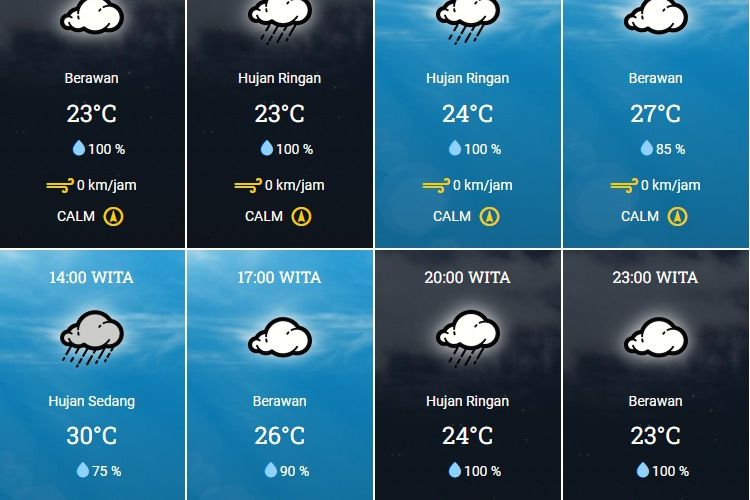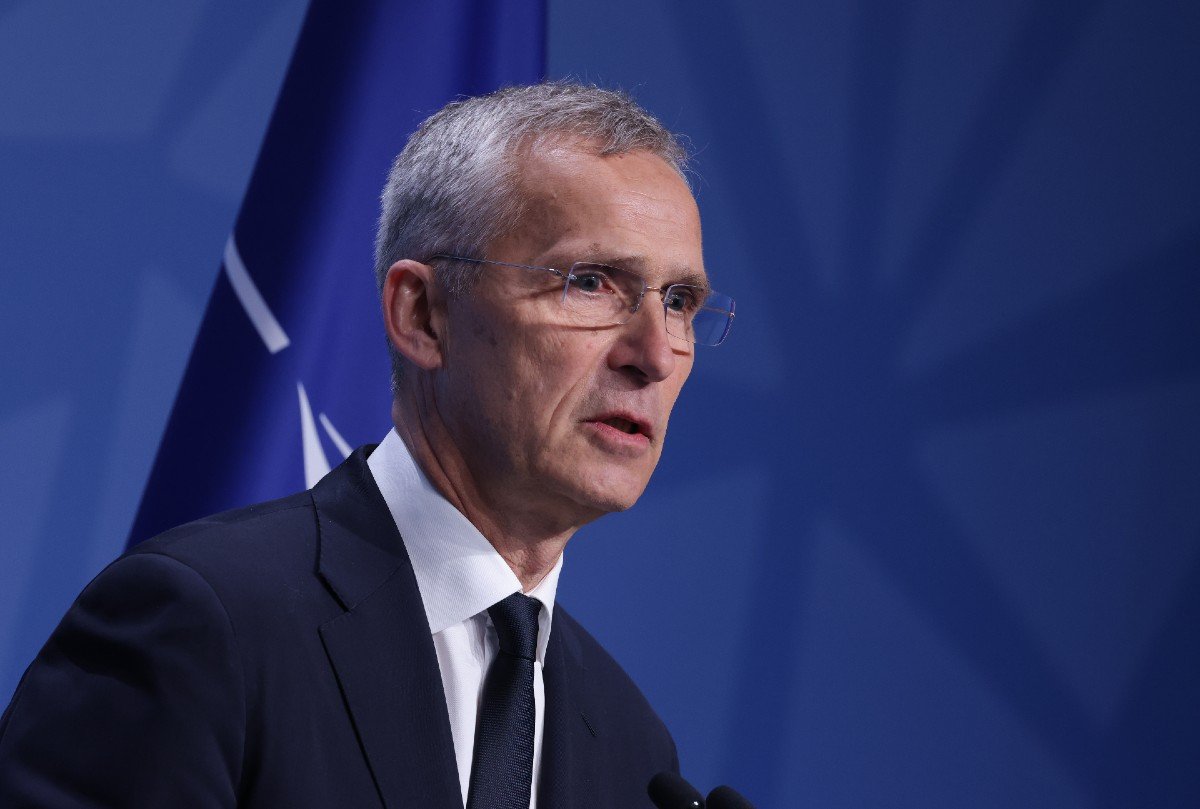Strengthening NATO's Eastern Flank: The US And The Growing Threat From Russia

Table of Contents
The Escalating Threat from Russia
Russia's increasingly assertive foreign policy poses a significant challenge to the security of NATO's Eastern Flank. This threat manifests in several ways, demanding a comprehensive understanding to effectively counter it.
Military Buildup and Aggressive Posturing
Russia's military has undergone a significant modernization and expansion in recent years, accompanied by increasingly aggressive posturing near NATO borders. This includes:
- Large-scale military exercises: Frequent and large-scale military exercises near the borders of NATO member states, simulating offensive operations.
- Troop deployments: Increased deployment of troops and advanced weaponry to regions bordering NATO countries, including advanced missile systems.
- Significant military spending: A substantial increase in Russia's defense budget, fueling the modernization and expansion of its military capabilities.
These actions, coupled with the 2014 annexation of Crimea and the ongoing conflict in Ukraine, demonstrate a clear pattern of Russian aggression and disregard for international law. These events highlight the urgent need for strengthening NATO's Eastern Flank to deter further escalation. The Russian military's actions directly impact Eastern European security, demanding a robust NATO response.
Hybrid Warfare Tactics
Russia employs a sophisticated strategy of hybrid warfare, combining military and non-military tools to achieve its geopolitical objectives. This includes:
- Disinformation campaigns: Widespread dissemination of false or misleading information through state-controlled media and online platforms to sow discord and undermine trust in Western institutions.
- Cyberattacks: Targeted cyberattacks against critical infrastructure and government agencies in NATO member states to disrupt operations and destabilize the region.
- Political interference: Attempts to influence elections and political processes in Eastern European countries through covert operations and support for pro-Russian political parties.
These hybrid threats destabilize the region, erode public trust, and undermine NATO cohesion. Combating information warfare and improving cybersecurity are crucial components of strengthening NATO's Eastern Flank against these insidious tactics. Addressing these geopolitical instability factors requires a multi-pronged approach.
Energy Dependence and Economic Coercion
Russia leverages its vast energy resources as a geopolitical weapon, exerting economic pressure on Eastern European nations. This includes:
- Energy supply manipulation: Russia utilizes its control over gas pipelines to influence the energy policies and political decisions of neighboring countries.
- Price manipulation: Fluctuations in energy prices can be used as a tool to destabilize economies and exert political pressure.
- Selective gas supply disruptions: Threats or actual interruptions of gas supplies can be used as leverage against countries perceived as uncooperative.
This economic coercion undermines the economic stability and political independence of Eastern European nations, making energy security a vital aspect of strengthening NATO's Eastern Flank. Reducing reliance on Russian energy and diversifying energy sources are critical steps in countering this form of influence.
The US Response: Bolstering NATO's Eastern Flank
The United States has significantly increased its military presence and cooperation with NATO allies in Eastern Europe to counter the growing threat from Russia.
Increased Military Presence
The US has deployed additional troops, equipment, and military assets to Eastern Europe, including:
- Rotation of troops: Increased frequency of troop rotations and deployments to countries bordering Russia.
- Pre-positioning of equipment: Storage of military equipment in strategic locations to enable rapid deployment in case of conflict.
- Enhanced air and naval presence: Increased air and naval patrols in the region to monitor Russian activity and demonstrate US commitment.
These deployments are strategically located to deter Russian aggression and reassure NATO allies. The US military deployments play a crucial role in strengthening NATO's Eastern Flank's defensive capabilities.
Enhanced Military Cooperation and Exercises
The US actively participates in joint military exercises with NATO allies in Eastern Europe, enhancing interoperability and readiness:
- Increased frequency of exercises: More frequent and larger-scale joint military exercises with NATO allies to improve coordination and readiness.
- Improved interoperability: Focus on improving the interoperability of military forces through joint training and exercises.
- Enhanced military readiness: Strengthening the collective military readiness of NATO forces in the region.
These NATO-US cooperation initiatives significantly improve the defensive capabilities and military readiness of the alliance along its eastern border. The joint military exercises are vital for maintaining a strong defense posture.
Economic and Diplomatic Support
The US provides significant economic and diplomatic support to Eastern European countries to bolster their resilience:
- Economic assistance: Provision of economic aid to strengthen the economies of Eastern European nations and enhance their resilience to Russian pressure.
- Diplomatic efforts: Active diplomatic engagement to support democratic reforms and promote regional stability.
- Strengthening regional alliances: Initiatives to deepen cooperation and integration within the region.
This economic assistance and diplomatic engagement aim to support regional stability and democratic values, thereby strengthening the Eastern Flank from within. These diplomatic efforts and economic assistance are instrumental in maintaining regional stability.
Challenges and Future Outlook
Strengthening NATO's Eastern Flank requires long-term commitment and adaptation to evolving threats.
Maintaining Long-Term Commitment
Sustaining political will and resources for a long-term commitment presents several challenges:
- Domestic political pressures: Potential shifts in domestic political priorities in the US could impact the level of commitment to the region.
- Resource allocation: Balancing budgetary priorities and allocating sufficient resources to maintain a strong military presence and support for allies.
- Maintaining public support: Ensuring continued public support for the ongoing commitment to strengthening NATO's Eastern Flank.
A long-term strategy is crucial to ensure continued support and resource allocation for maintaining a robust defense posture. Sustained political will is paramount to this long-term strategy.
Adapting to Evolving Threats
NATO must adapt to Russia's evolving aggression, including hybrid warfare tactics:
- Investing in new technologies: Developing and deploying advanced technologies to counter cyberattacks and disinformation campaigns.
- Adapting military strategies: Developing flexible military strategies to address the full spectrum of Russian threats, including conventional and unconventional warfare.
- Strengthening cyber defenses: Improving cybersecurity infrastructure and capabilities to protect against Russian cyberattacks.
Adaptability and technological advancements are crucial for addressing the ever-evolving nature of the threats facing NATO's Eastern Flank. Investing in future technologies is essential for maintaining a robust defense.
Conclusion: Strengthening NATO's Eastern Flank: A Crucial Endeavor
The growing threat from Russia necessitates a continued and strengthened commitment from the US and its NATO allies to fortify the alliance's eastern flank. The crucial role of the US in deploying troops, fostering cooperation, and adapting to evolving threats has been highlighted. Maintaining a strong military presence, enhancing military cooperation, and providing robust economic and diplomatic support are vital for deterring further Russian aggression and ensuring the security of NATO's Eastern Flank. We must continue to invest in these efforts, strengthening our collective defense, and adapting to the ever-changing challenges. Learn more about the issue, engage in political discussions, and support policies that bolster the security of NATO's Eastern Flank and deter further Russian aggression. The future security of the region depends on our collective commitment to fortifying NATO's Eastern Flank and maintaining a strong, resilient alliance.

Featured Posts
-
 Why Did Canadian Tire Buy Hudsons Bay Understanding The Merger
May 28, 2025
Why Did Canadian Tire Buy Hudsons Bay Understanding The Merger
May 28, 2025 -
 1968 And 2024 A Springtime Comparison And Summer Drought Forecast
May 28, 2025
1968 And 2024 A Springtime Comparison And Summer Drought Forecast
May 28, 2025 -
 Prakiraan Cuaca Akurat Kalimantan Timur Ikn Balikpapan Samarinda
May 28, 2025
Prakiraan Cuaca Akurat Kalimantan Timur Ikn Balikpapan Samarinda
May 28, 2025 -
 Nato Allies Closer To 2 Defense Spending Goal Stoltenbergs Assessment
May 28, 2025
Nato Allies Closer To 2 Defense Spending Goal Stoltenbergs Assessment
May 28, 2025 -
 K Pop Stars Shine At The Amas Rose Rm Jimin Ateez And Stray Kids Nominated
May 28, 2025
K Pop Stars Shine At The Amas Rose Rm Jimin Ateez And Stray Kids Nominated
May 28, 2025
